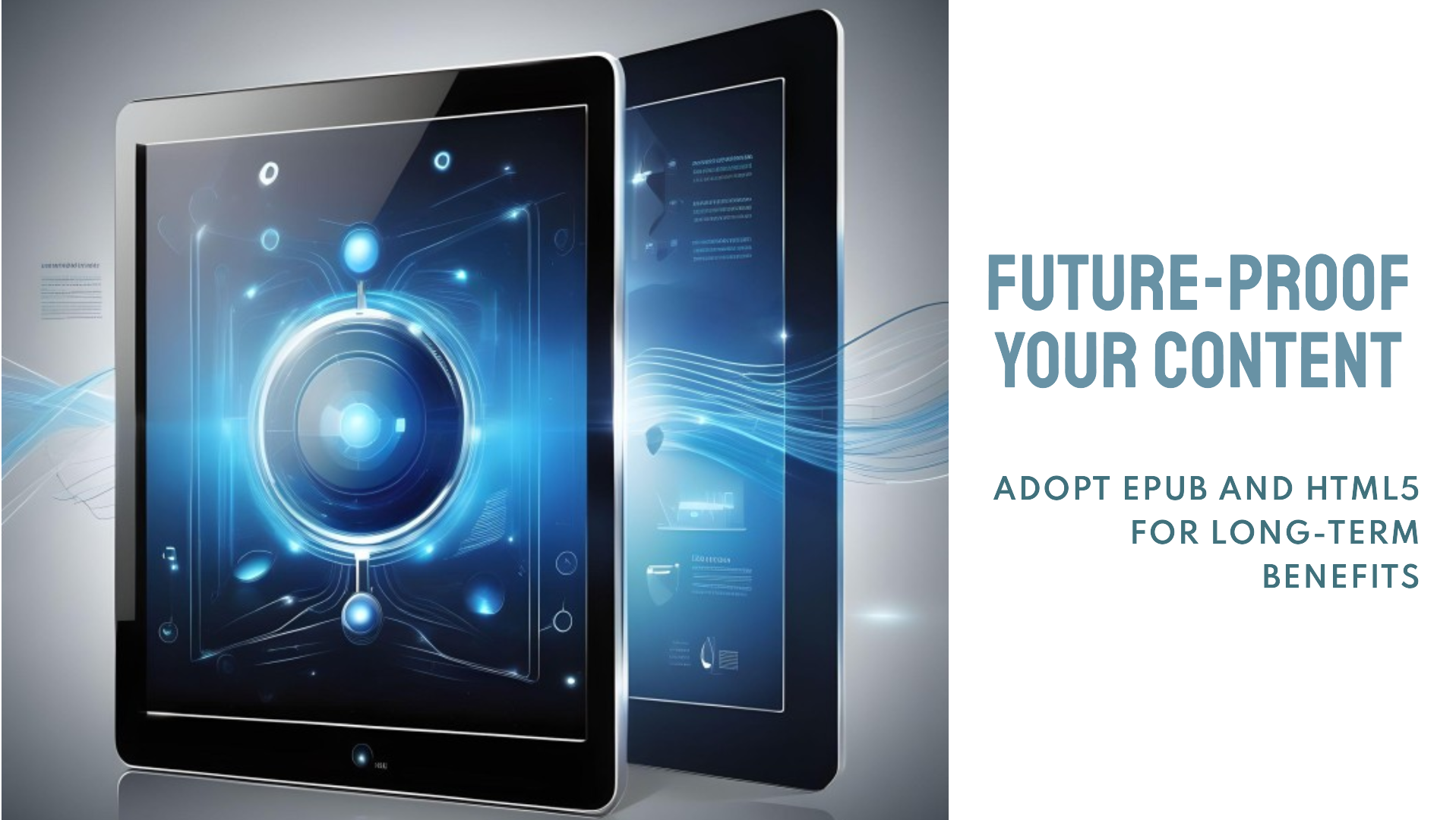In today's fast-paced digital landscape, the longevity and relevance of content are paramount considerations for publishers and content creators. With evolving technological standards and shifting reader expectations, it's crucial to adopt formats that can withstand the test of time. Among these formats, ePub and HTML5 stand out as versatile solutions that offer long-term benefits for future-proofing your content.
The Evergreen Appeal of ePub and HTML5
ePub: As a widely adopted standard for eBooks, ePub offers several advantages for future-proofing content. Its compatibility across various devices and platforms ensures accessibility for readers regardless of their preferred reading device or software. ePub's flexible design allows for dynamic resizing and reflowable text, optimizing the reading experience on screens of all sizes. Moreover, ePub's support for multimedia elements, such as images, audio, and video, enriches content presentation and engagement.
HTML5: With its robust capabilities for web development, HTML5 serves as a cornerstone for creating future-proof digital content. HTML5 enables responsive design, ensuring that content adapts seamlessly to different screen sizes and devices. Its support for rich media, interactive elements, and advanced styling options empowers content creators to deliver immersive experiences that captivate audiences. Additionally, HTML5's compatibility with modern web browsers and accessibility features enhances the accessibility and usability of content for diverse audiences.
Navigating Technological Evolution
The landscape of digital technology is in a constant state of evolution, with new devices, software updates, and standards emerging regularly. In this dynamic environment, content creators face the challenge of ensuring that their content remains relevant and accessible amid technological advancements. By adopting ePub and HTML5 formats, content creators can future-proof their content by leveraging the inherent adaptability and compatibility of these formats.
Longevity: ePub and HTML5 are built on open standards and widely supported technologies, ensuring their longevity in the digital ecosystem. Content published in these formats is less susceptible to obsolescence, as they can be easily adapted to accommodate future technological developments.
Flexibility: The modular nature of ePub and HTML5 allows for easy integration of new features, enhancements, and updates without compromising the integrity of existing content. This flexibility enables content creators to stay ahead of evolving reader expectations and technological standards.
Accessibility: Accessibility is a key consideration in digital content creation, and ePub and HTML5 offer robust solutions for ensuring content accessibility. By adhering to accessibility guidelines and standards, such as WCAG (Web Content Accessibility Guidelines), content creators can reach a broader audience and enhance the user experience for all readers.
Conclusion
In an era defined by rapid technological advancement and evolving reader preferences, future-proofing content is essential for maintaining relevance and accessibility. Adopting formats such as ePub and HTML5 equips content creators with the tools to navigate the ever-changing digital landscape with confidence. By leveraging the longevity, flexibility, and accessibility of ePub and HTML5, content creators can ensure that their content remains relevant, accessible, and engaging for years to come.
